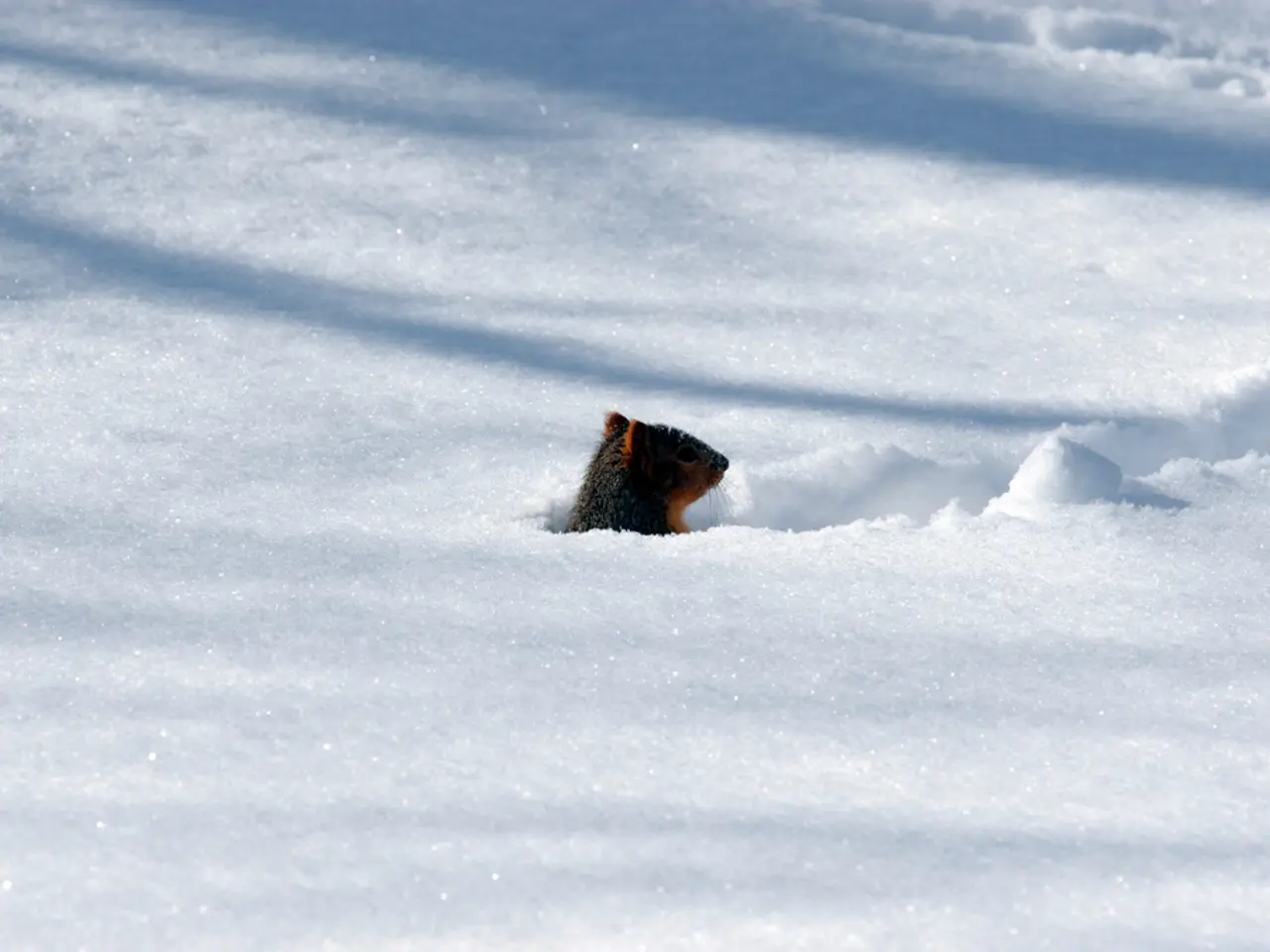Guide for Verifying Snow Coverage on Trails
When planning a winter hiking trip, it's crucial to have accurate and up-to-date information about snow conditions on the trail. This guide will walk you through various tools and methods to help you make informed decisions.
Official Trail and Park Websites
Many ski resorts and national parks provide detailed, regularly updated trail and snow condition reports. For instance, Smugglers' Notch Resort in Vermont offers a "Nordic Report" with status, snow surfaces, and difficulty levels for individual trails along with recent snow totals [1]. Similarly, Yellowstone National Park publishes a backcountry conditions report including trail status, snowpack maps, and safety warnings, plus a way for hikers to submit recent trail condition updates by email [2].
Specialized Snow Forecast and Reporting Services
Websites like Snow-Forecast.com offer extensive snow forecasts, live weather, webcams, and snow depth reports for ski resorts worldwide. These platforms provide powder condition updates and new snow predictions critical for planning winter hiking or backcountry trips [3].
Local Trail Associations
Regional trail organizations, such as the Tahoe Rim Trail Association, maintain current trail condition pages with detailed notes on snow cover, trail obstructions, water sources, and seasonal access information. These sites often include recent trail crew work and practical advice for hikers [4].
Community and User-Generated Reports
Many parks and trail systems encourage hikers to submit recent trail conditions, which are then shared publicly. For example, Yellowstone's Backcountry Office invites trail users to email condition reports to help keep others informed [2].
Snow Checking Tools
Several tools can aid in checking snow on hiking trails. CalTopo, for instance, integrates high-resolution Sentinel Satellite imagery, updated weekly, for snow reconnaissance. It also offers a custom SNODAS Snow Layer feature [5]. Gaia GPS, a navigation tool with web, iPhone, and Android versions, allows checking for snow cover with a premium membership and the SNODAS snow layer [6].
NOAA Snow Layer for Google Earth is another tool for checking snow, while Mountain Forecast offers altitude-adjusted forecasts for many high peaks and summits [7]. snowEvaluator, a free option, is built on the Earth Engine Apps platform [8].
Workflow for Checking Snow Conditions
When determining if there is snow on the trail, the workflow consists of gathering as much data as possible, checking the avalanche risk, examining the upcoming weather, deciding whether to go or not, and being flexible to turn around if conditions differ from expectations.
Finding Local Resources
To find local hiking trail reports and community resources for snow conditions, consider the following approaches based on reputable sources:
- Visit Official Resort or Park Websites
- Use Specialized Snow Forecast and Reporting Services
- Access Local Trail Association Updates
- Community and User-Generated Reports
Remember, the best method combines official trail and park websites, snow and weather forecasting tools, local trail associations, and user-submitted reports to get accurate, up-to-date local hiking trail and snow condition information. Always check multiple sources shortly before your trip due to rapidly changing conditions, especially in alpine environments [1][2][4].
[1] Smugglers' Notch Resort Nordic Report: https://www.smuggs.com/nordic/trails/report [2] Yellowstone National Park Backcountry Conditions Report: https://www.nps.gov/yell/planyourvisit/backcountry-conditions.htm [3] Snow-Forecast.com: https://www.snow-forecast.com/ [4] Tahoe Rim Trail Association Trail Conditions: https://tahoerimtrail.org/trail-conditions/ [5] CalTopo: https://caltopo.com/ [6] Gaia GPS: https://www.gaiagps.com/ [7] NOAA Snow Layer for Google Earth: https://www.ncdc.noaa.gov/snow-and-ice/google-earth/ [8] snowEvaluator: https://code.earthengine.google.com/projects/snowevaluator/index.html
- For hiking winter trails, regularly consult trail and snow condition reports offered by ski resorts and national parks, such as Smugglers' Notch Resort's Nordic Report or Yellowstone National Park's Backcountry Conditions Report.
- Utilize specialized snow forecast and reporting services like Snow-Forecast.com, which provides extensive snow forecasts, live weather updates, and snow depth reports for ski resorts worldwide.
- Stay informed about current trail conditions by checking the websites of regional trail organizations, such as the Tahoe Rim Trail Association, which offers detailed information on snow cover, trail obstructions, water sources, and seasonal access.
- Verify trail conditions through community and user-generated reports, such as the updates submitted by hikers to Yellowstone's Backcountry Office for public sharing.
- Leverage snow checking tools like CalTopo with high-resolution Sentinel Satellite imagery, Gaia GPS, Mountain Forecast, or snowEvaluator, built on the Earth Engine Apps platform to assess snow conditions on hiking trails accurately.




